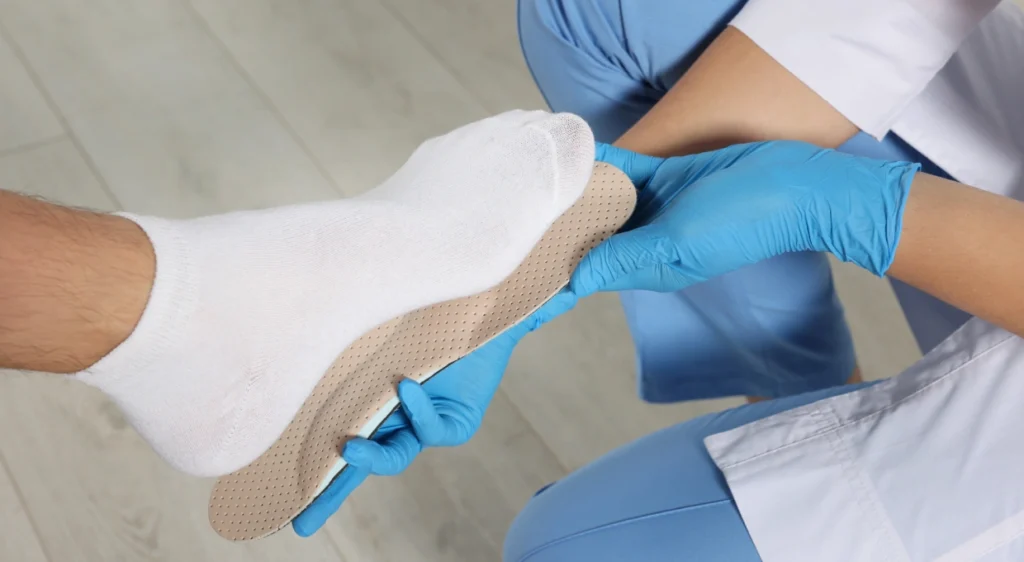Ankle sprain is one of the most common injuries affecting both athletes and people in their daily lives. This injury occurs when the ligaments that support the ankle are stretched or torn, usually due to a sudden movement or unexpected twisting of the foot. Understanding the symptoms, proper treatment and preventive measures can help minimize complications and speed recovery.
What is an Ankle Sprain?
An ankle sprain occurs when the ligaments surrounding the ankle are stretched or torn beyond their normal capacity. These ligaments are strong bands of tissue that connect the ankle bones together and provide stability to the joint. There are different degrees of sprains, ranging from mild stretching to complete tearing of the ligaments.
Ankle Sprain Symptoms
Symptoms of an ankle sprain can vary depending on the severity of the injury, but the most common include:
Immediate Pain
Pain is the first presenting symptom, especially when attempting to place the foot on the ground. Pain can range from mild to severe, depending on the degree of the sprain.
2. Swelling
Swelling usually appears soon after the injury due to fluid accumulation in the affected area. In some cases, the swelling may be considerable.
3. Bruises
More severe sprains may cause bruising around the ankle due to the rupture of small blood vessels in the injured area.
4. Ankle Instability
In severe sprains, the ankle joint may feel unstable or “loose,” indicating that the ligaments supporting the ankle are significantly damaged.
5. Walking Difficulty
Depending on the severity of the sprain, it may be difficult or impossible to walk without pain. In severe cases, crutches may be necessary.

Ankle Sprain Diagnosis
If you suspect you have suffered an ankle sprain, it is important to consult a physician, especially if the symptoms are severe. Diagnosis is based on a physical examination, where the physician will evaluate the mobility, sensation and stability of the ankle. In some cases, X-rays or an MRI may be performed to rule out fractures or to assess the extent of ligament damage.
Treatment for Ankle Sprains
Treatment for an ankle sprain will depend on the severity of the injury, but generally includes:
RICE Protocol
Rest: It is essential to avoid putting weight on the injured ankle to allow the ligaments to recover. Ice: Applying ice to the affected area for 15-20 minutes every 2-3 hours can help reduce swelling and pain. Compression: Using an elastic bandage or compression wrap may help control swelling. Elevation: Keeping the ankle elevated above the level of the heart helps reduce swelling.
Anti-Inflammatory Medications
Nonsteroidal anti-inflammatory drugs (NSAIDs) such as ibuprofen can help reduce pain and swelling.
3. Immobilization
In more severe cases, it may be necessary to immobilize the ankle with a splint or an orthopedic boot to limit movement and allow the ligaments to heal.
4. Physiotherapy
Once the initial swelling has subsided, physical therapy is essential to restore ankle mobility, strength and stability. Balance and strengthening exercises help prevent future injuries.
5. Surgery
In extremely severe cases where the ligaments are completely torn or stability is not achieved with conservative treatment, surgery may be necessary to repair the damaged ligaments.
Prevention of Ankle Sprains
Preventing future ankle sprains is possible through a series of measures:
Muscle Strengthening
Performing exercises that strengthen the muscles around the ankle and leg can provide better support for the joint and reduce the risk of sprains.
2. Use of Appropriate Footwear
Wearing shoes that provide good arch and ankle support is crucial, especially during sports or activities that involve sudden movements.
3. Balance Training
Improving balance through specific exercises can help prevent sprains and strains.
4. Careful When Walking on Irregular Surfaces
It is important to be cautious when walking or running on uneven terrain to avoid accidental twisting of the ankle.
Conclusion
Ankle sprain is a common injury but one that requires proper attention and care to avoid long-term complications. Recognizing the symptoms, seeking a professional diagnosis and following a proper treatment plan are essential steps to a full recovery. Prevention, through strengthening exercises and the use of appropriate footwear, is key to avoiding future injuries. At Clínica San Román, we offer specialized care for the treatment and rehabilitation of ankle sprains, helping our patients recover mobility and avoid relapses. This comprehensive approach not only speeds recovery, but also reduces the risk of long-term complications, ensuring that you can return to your daily activities with confidence.



